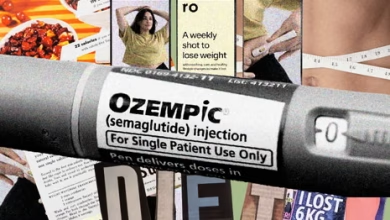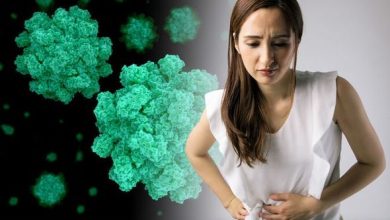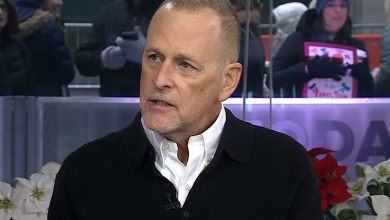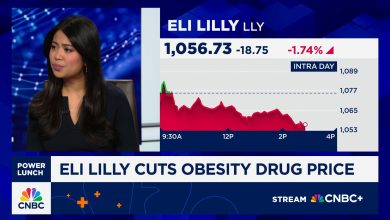27-Year-Old Woman Discovers Breast Cancer After Overlooking Subtle Warning Sign
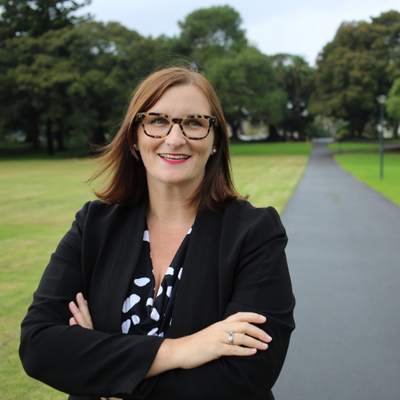
When 27-year-old Sarah Mitchell (name changed for privacy) first noticed a faint change in her breast, she dismissed it as nothing serious. Like many young women in their twenties, cancer wasn’t something she thought could happen to her. But months later, a diagnosis turned her world upside down — and her story has since become a powerful reminder of why early detection and awareness are essential, no matter your age.
This is Sarah’s story — and the lessons it holds for every woman about listening to your body, trusting your instincts, and never ignoring subtle warning signs.
A Subtle Change That Seemed Harmless
Sarah was an energetic marketing professional living in Austin, Texas. Between long work hours, social outings, and weekend fitness classes, she led what most would call a healthy lifestyle. She ate well, exercised regularly, and had no family history of breast cancer.
In early spring, she noticed something small — a slight thickening near her left breast that felt different from the surrounding tissue. It wasn’t painful, and she didn’t feel a distinct lump. There was no redness, discharge, or swelling. It just felt… different.
“I remember running my fingers over it and thinking, ‘It’s probably hormonal,’” Sarah recalled. “I’d read that breasts can feel different during certain times of the month, so I didn’t worry.”
Like many young women, she assumed that breast cancer only affected older women — those over 40. With work deadlines and social plans on her mind, she didn’t think twice about scheduling a doctor’s appointment.
That small oversight would later prove life-changing.
When Ignoring Symptoms Becomes Dangerous
Over the next few months, Sarah noticed the area didn’t go away. It didn’t hurt, but something about it felt persistent. She also observed that one breast seemed slightly fuller than the other — something she chalked up to weight changes or hormones.
“I felt fine otherwise,” she said. “No fatigue, no pain. I just didn’t feel sick. So why would I think it was cancer?”
It’s a common misconception — that cancer always comes with severe or obvious symptoms. But early-stage breast cancer often doesn’t cause pain or discomfort. In fact, for many women, the first sign is a small lump, skin texture change, or nipple abnormality that can easily be overlooked.
By the time Sarah finally visited her gynecologist — after her boyfriend urged her to get checked — it had been nearly seven months since she first noticed the change.
Her doctor ordered an ultrasound, followed by a mammogram and a biopsy. The results came back within a week.
Sarah was diagnosed with Stage II invasive ductal carcinoma — a form of breast cancer that had already started spreading beyond the initial site.
A Shocking Diagnosis at 27
“When my doctor said the word ‘cancer,’ I felt like my world froze,” Sarah recalled. “I was 27. I didn’t smoke, I worked out, I ate healthy. I kept thinking, ‘How could this happen to me?’”
For younger women, a breast cancer diagnosis can feel especially devastating. According to the American Cancer Society, breast cancer is relatively rare in women under 30, accounting for fewer than 2% of all cases. But that small percentage represents thousands of young lives each year — and awareness remains crucial.
Sarah’s oncologist explained that early detection could have made a major difference. “Had she come in a few months earlier,” her doctor noted, “the tumor might have been smaller and more easily treatable.”
Still, there was hope. Her cancer was treatable, and her care team immediately designed a plan to fight it aggressively.
Facing Treatment Head-On
Sarah underwent a combination of lumpectomy, chemotherapy, and radiation therapy — an intense and emotional journey that tested her both physically and mentally.
The lumpectomy removed the primary tumor, but follow-up tests revealed that several nearby lymph nodes showed signs of cancerous cells. That meant chemotherapy was necessary to reduce the risk of recurrence.
“I lost my hair, I lost my energy, and at times I felt like I was losing myself,” Sarah said. “But I refused to lose hope.”
During her six months of chemotherapy, Sarah joined a support group for young women with breast cancer. There, she met others who shared similar experiences — women in their twenties and thirties who also missed early symptoms or were initially misdiagnosed.
“Being around women who understood what I was going through made a world of difference,” she said. “We laughed, we cried, and we reminded each other that we weren’t alone.”
The Emotional Toll of a Young Cancer Diagnosis
Cancer at any age is emotionally challenging, but for young adults, it carries unique psychological burdens. Many are just starting careers, relationships, or families. The sudden shift from independence to illness can trigger anxiety, depression, and feelings of isolation.
“People would say, ‘You’re so young, you’ll beat this!’” Sarah explained. “They meant well, but it made me feel like I wasn’t allowed to be scared.”
Beyond emotional struggles, Sarah also faced the physical consequences of treatment — fertility concerns, body image changes, and long-term health monitoring.
“I had to think about things like egg freezing and hormone therapy,” she said. “At 27, I was making decisions most people don’t face until much later in life.”
Despite the challenges, Sarah found strength in vulnerability. She began documenting her journey online, sharing her experience to raise awareness about young women and breast cancer.
How Social Media Became Her Platform for Awareness
Through Instagram and TikTok, Sarah shared photos from treatment days, honest reflections on fear and resilience, and educational posts about self-exams. Her story quickly gained attention.
“I started getting messages from women who said they checked themselves because of my posts,” she said. “Some even told me they found lumps and caught their cancer early. That made every hard day worth it.”
Her advocacy soon evolved into collaboration with nonprofits focused on young adult cancer awareness, such as Bright Pink and Young Survival Coalition, which promote early detection and emotional support for women under 40.
Why Early Detection Matters
Sarah’s story underscores a critical truth: early detection saves lives. According to the World Health Organization (WHO), when breast cancer is detected early and treated promptly, the five-year survival rate exceeds 90%. However, delays in diagnosis significantly increase the risk of advanced disease and poorer outcomes.
Common Early Warning Signs of Breast Cancer
While every woman’s experience is unique, doctors recommend watching for these subtle but important changes:
- A lump or thickening in the breast or underarm area
- Changes in breast size or shape
- Dimpling or puckering of the skin
- Redness, scaling, or irritation of the nipple or breast skin
- Nipple discharge (other than breast milk)
- A nipple turning inward (inversion)
- Persistent pain in one area of the breast
It’s also essential to remember that not all breast changes mean cancer, but any new or persistent symptom deserves medical evaluation.
The Importance of Breast Self-Exams
One of the most powerful lessons Sarah shares is the importance of regular self-exams. While they’re not a substitute for professional screening, they help you become familiar with what’s normal for your body — making it easier to notice changes early.
Here’s a quick guide to performing a monthly self-breast exam:
- Look: Stand in front of a mirror with your shoulders straight and arms on your hips. Look for changes in shape, color, or skin texture.
- Raise your arms and check again for any visible differences.
- Feel while lying down: Use your right hand to check your left breast and vice versa, using circular motions and light to firm pressure.
- Feel while standing or sitting: Many women find it easiest to do this in the shower when the skin is wet and smooth.
If you notice anything unusual, schedule a medical evaluation — even if it seems minor.
Young Women and Breast Cancer: The Rising Need for Awareness
Although breast cancer primarily affects women over 40, recent studies show that cases among younger women are slowly increasing. According to the National Cancer Institute, diagnoses in women aged 25–39 have risen slightly over the past two decades.
Younger women also face unique challenges:
- Delayed diagnosis due to low suspicion
- More aggressive tumors in some cases
- Limited screening recommendations for women under 40
- Emotional and financial strain
Doctors emphasize that young women should not ignore persistent breast changes, even if routine mammograms aren’t yet recommended.
“Your age doesn’t make you immune,” says Dr. Lauren White, an oncologist specializing in young adult cancers. “Breast cancer doesn’t discriminate — and the earlier it’s found, the better your chances.”
Life After Cancer: A New Perspective
After completing her treatment, Sarah underwent regular follow-up scans and transitioned into survivorship care — a phase focused on long-term recovery, lifestyle adjustments, and emotional healing.
“I used to think surviving cancer meant being cancer-free,” she reflected. “But it’s also about learning to live fully again — with gratitude, awareness, and purpose.”
Today, Sarah is in remission. Her hair has grown back, her energy has returned, and she continues to share her message: Listen to your body. Don’t dismiss small changes. Early action saves lives.
She’s also involved in community outreach, speaking at colleges and women’s health events to encourage self-awareness and proactive care.
How to Reduce Your Breast Cancer Risk
While not all cases are preventable, research shows that certain lifestyle habits can help lower your risk:
- Maintain a healthy weight — Obesity is linked to higher estrogen levels, which can increase risk.
- Stay physically active — Aim for at least 150 minutes of moderate activity per week.
- Limit alcohol consumption — Even small amounts can raise risk.
- Eat a nutrient-rich diet — Focus on fruits, vegetables, lean proteins, and whole grains.
- Avoid smoking — Smoking has been linked to several cancers, including breast cancer.
- Manage stress — Chronic stress can affect hormone balance and immunity.
- Know your family history — If breast cancer runs in your family, discuss genetic testing with your doctor.
The Power of Community and Support
Throughout her journey, Sarah learned that healing extends beyond medical treatment. Emotional support from friends, family, and fellow survivors played a vital role in her recovery.
“I couldn’t have done it alone,” she said. “There were days when I didn’t want to get out of bed. But having people who believed in me — who showed up, who listened — made all the difference.”
Support groups, both in-person and online, can be invaluable for women navigating similar experiences. Organizations such as Susan G. Komen, Young Survival Coalition, and Breast Cancer Now offer free resources, counseling, and community connections.
A Message for Every Woman
Sarah’s story is a testament to the importance of paying attention to your body — and not waiting until it’s too late.
“If I could go back, I’d tell my younger self to get checked the moment I felt something off,” she said. “It’s always better to be safe than sorry.”
Her message resonates deeply, especially among young women who might think breast cancer is something that happens later in life. Awareness, education, and action can mean the difference between early-stage treatment and a life-threatening diagnosis.
Final Thoughts
At 27, Sarah Mitchell never imagined she’d be battling breast cancer. But her courage to share her journey has become a lifeline for countless women who might otherwise ignore the same subtle signs.
Her story is not just about survival — it’s about awakening a generation of women to the power of awareness. Breast cancer doesn’t wait for the “right age.” It can happen to anyone, at any time.

